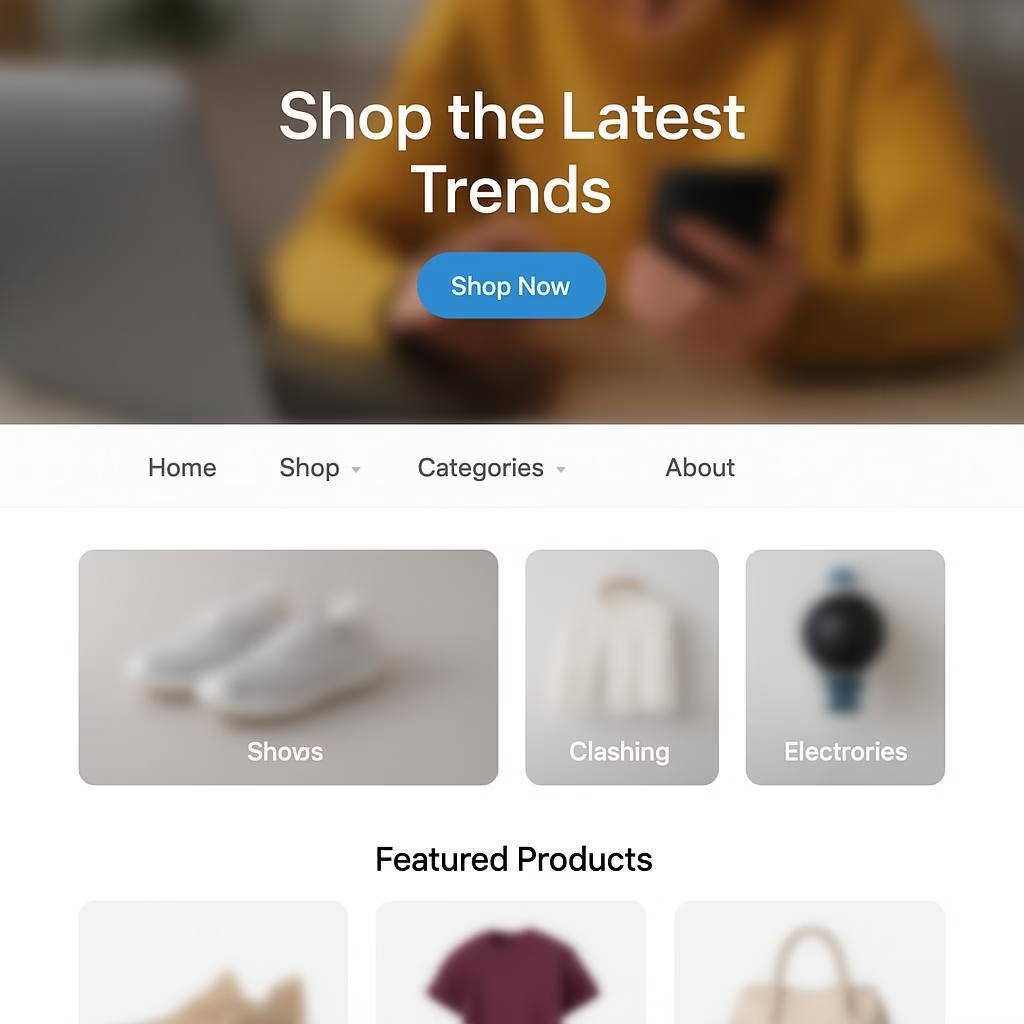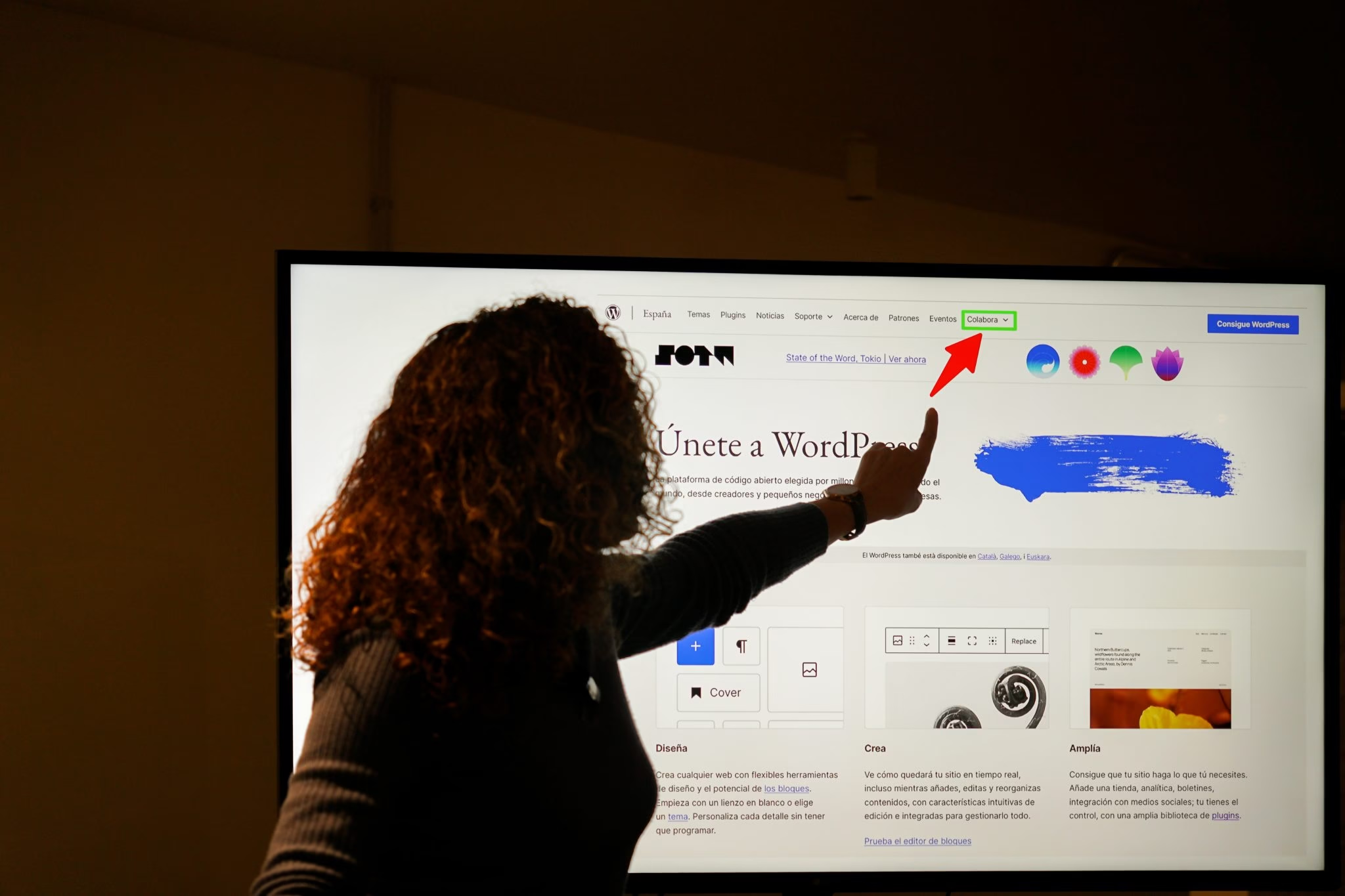Features every small business website must have are no longer optional—they are the silent salespeople, the round-the-clock representatives, and the secret sauce behind many thriving businesses today. In today’s fast-paced, scroll-happy world, if your business isn’t easy to find or impressive to interact with online, you’re basically whispering in a crowded market. Think about it: when someone wants to find out about a brand, service, or even a snack shop in their neighborhood—what’s the first thing they do? Yup, they Google it.
But here’s the twist: it’s not just about having a website anymore. The game has changed. It’s about what’s on it—and whether or not it’s helping or hurting your brand. The truth is, a website without the right features is like a shop with broken doors, missing price tags, and no one at the counter. It’s a digital disaster waiting to be ignored.
At Instant Website Setup, we’ve worked with hundreds of small businesses, from thrift sellers and fashion brands to caterers and plumbers. And you know what we’ve seen? The businesses that grow online aren’t always the biggest or most expensive-looking. They’re the ones with a smart website that works. One that loads fast, looks great on any phone, tells people exactly what they need to know, and makes it super easy to take action—whether that’s placing an order, making a booking, or sending a quick WhatsApp message.
Let’s be honest—most of your potential customers don’t have the time or patience to figure things out. If your website confuses them, delays them, or doesn’t even show up properly on their device, they’re bouncing. Off your site and onto your competitor’s. That’s money lost. Brand credibility lost. Trust lost. And all that could have been avoided if your site had just five powerful features baked in from the start.
Now you might be thinking, “But my business is small. I’m just starting out. I don’t need anything fancy.” I hear you. But here’s the thing—fancy doesn’t win. Functional wins. Simple, smart, and strategic always beats complicated and cluttered. And the best part? These must-have features aren’t about spending millions or coding from scratch. Nope. They’re about setting up your website the right way—the customer-focused way—so that it works for you.
In this article, we’ll break down the top 5 features every small business website must have, why each one matters, and how they directly affect your ability to get more customers, boost trust, and make sales without shouting. Whether you sell handmade jewelry, run a catering business, or offer online coaching from anywhere—this guide is for you.
We’ll also share real-life examples of businesses that turned things around simply by tweaking these areas, and we’ll point you to resources (yes, some free ones!) that can help you implement them without stress.
Oh—and if you already have a site and it’s not converting, this guide might just show you why. A small change can make a big difference.
So grab a drink, put your business-owner hat on, and let’s get into it. Because your website isn’t just “something to have” anymore. It’s your digital shopfront, your first impression, your trust magnet—and in a crowded marketplace, it better come correct.
➡️ Want to skip the struggle and get your site launched with all 5 features done-for-you? Get Started Here
1. Mobile-First, Lightning-Fast Design 🚀📱
(One of the Top Features Every Small Business Website Must Have)
Imagine this: A potential customer sees your Instagram reel, loves your work, and clicks your link. Your website opens… slowly. The layout looks jumbled on their phone. The buttons are too tiny to tap. Before you can say “loading…,” they’ve bounced — and likely won’t come back.
If that sounds familiar, your site’s design is costing you customers.
Here’s the truth:
In Nigeria today, over 85% of online traffic comes from mobile devices. That means most of your potential customers are not visiting your website on a laptop or desktop — they’re browsing from their phones while sitting in traffic, scrolling during lunch, or checking you out on the go.
💡 If your website isn’t designed for mobile-first experience, it’s losing before the game even starts.
Why Mobile-First Design Matters
Being mobile-first doesn’t just mean your site “works” on phones — it means your site was built with phones in mind first, and adapted to desktop later. That’s a huge shift in design mindset.
Here’s what a mobile-first, lightning-fast website should do:
- Load in under 3 seconds.
Anything longer and people assume your business is slow too (yep, they make that connection). - Adjust automatically to screen size.
Whether they’re using a small Android phone or a tablet, your website should fit perfectly without zooming or horizontal scrolling. - Use tap-friendly buttons & readable fonts.
No one should have to pinch and zoom to read your text or hit the “Book Now” button. - Keep the layout clean and focused.
On a small screen, clutter is killer. Your site should be clean, easy to navigate, and fast to guide the visitor to action.
Speed = Sales
Google has made it clear: site speed affects search rankings.
That means if your website is slow, not only are real people bouncing off — Google is ranking you lower, too. That’s a double loss.
Here’s how to speed things up:
- Use optimized, compressed images (no heavy uploads).
- Avoid unnecessary animations or plugins.
- Choose lightweight themes built for mobile.
- Use fast hosting (like we offer at InstantWebsiteSetup.com).
Want to check your site speed? Use Google’s PageSpeed Insights tool. If your mobile score is below 90, it’s time to fix that.
Why This Feature Is Non-Negotiable
Your website is the first impression many people will have of your business. If it feels slow or outdated, they’ll think your business is too.
A sleek, fast, mobile-friendly website makes people feel like, “Ah, these guys are serious.” And that feeling builds trust — trust that turns into sales.
Let’s be blunt:
You don’t need a fancy website — you need a functional one. And in 2025, functional starts with fast and mobile.
✅ Up Next: Clear, Actionable CTA (Call to Action)
(Why most websites leave visitors confused — and how to guide yours straight to the sale.)
Check out our done-for-you Website Setup Plans for mobile-optimized designs built to convert.
Want to test your current site? Visit PageSpeed Insights.
2. Clear, Actionable CTA (Call to Action) 🎯

(Another One of the Features Every Small Business Website Must Have)
Okay, real talk — how many times have you clicked on a website and thought, “Okay… now what?”
You scroll. You squint. You swipe around. But there’s no clear button. No link. No clue. You’re left guessing.
Now flip the script: If someone lands on your website, do they know exactly what to do next? Or are they bouncing off because they’re confused?
What Is a CTA, and Why Does It Matter?
CTA stands for Call to Action — the button, link, or phrase that tells your visitor exactly what step to take next. It could be:
- Book Now
- Start Your Free Trial
- Send a WhatsApp Message
- Order Online
- Get a Quote
- Pick a Website Plan
Without it, your visitor is just a digital window-shopper.
With it, you guide them — fast — from curiosity to conversion.
📢 Think of your website like a sales assistant. A good CTA is its closing line.
What Makes a CTA Clear and Actionable?
Let’s break it down:
✅ It’s Obvious
Don’t bury it under fancy design or walls of text.
Use bold colors, big buttons, and keep it visible above the fold (before scrolling).
✅ It Uses Action Words
Strong verbs like “Book,” “Get,” “Start,” “Claim,” or “Download” work better than “Click here.”
✅ It’s Not Vague
“Learn more” is fine… but “Get My Business Website Now” is way more exciting — and focused.
✅ It Aligns with Their Goal
If your visitor wants to book your service, don’t ask them to “Read Our Story.” Respect their time.
Examples of Killer CTAs for Small Business Sites
- Service Business (e.g. salon, cleaner, tailor):
“Book Your Slot Now” or “Reserve a Spot” - E-commerce Business:
“Shop Now — 30% Off Today!” or “Order & Get Delivery Tomorrow” - Creative Portfolio:
“Let’s Collaborate” or “View My Work” (leading to a lead form or contact page) - Instant Website Setup (You 👋🏽):
“Pick a Website Plan” or “Start My Website Today”
Why This Is One of the Must-Have Website Features
Without a strong CTA, you’re losing ready-to-buy visitors.
You’ve done the hard part: They’ve found your site. They’ve scrolled through your content. Now they just need to take the next step — and your CTA is the bridge.
🚧 No CTA = No conversion = No client.
And we can’t have that.
Pro Tips to Boost Your CTA:
- Use WhatsApp Buttons
People in Nigeria love quick chats. Add a CTA like “Chat with Us on WhatsApp”. - Repetition is Okay
Place your CTA in multiple places: top, middle, and bottom of your page. - Create Urgency
Add a little pressure (the good kind):
“Get 30% Off – Offer Ends Today!” - Test Different CTAs
A/B test different button texts, colors, and placements to see what converts best.
Final Word on CTAs:
You’re not just building a pretty site — you’re building a conversion machine.
That means every page needs to have a clear goal and a crystal-clear CTA guiding the visitor toward action.
Don’t make people figure it out.
Tell them what to do — and make it super easy to do it.
✅ Up Next: Social Proof & Trust Signals
(Why showing off your happy customers isn’t bragging — it’s strategy.)
Not sure what CTA fits your business? Visit our page to see examples in action.
Check out Neil Patel’s CTA tips for more best practices.
3. Social Proof & Trust Signals
“If others trust you, new visitors will too.”
Let’s keep it real: we’re all a little skeptical online. Before buying anything — from sneakers to services — most people want proof. Proof that someone else tried it, liked it, and didn’t regret it. That’s where social proof and trust signals come in.
In today’s small business landscape, especially in Nigeria where scams have made many customers extra cautious, social proof isn’t just helpful — it’s essential. It’s the digital equivalent of “my guy used them and it was legit.” If your website doesn’t scream “real people trust us and you should too,” you’re missing a massive opportunity to convert curious visitors into confident buyers.
What Exactly Is Social Proof?
Social proof includes all the visible ways that show people are engaging with — and benefiting from — your brand. Think:
- ⭐ Customer Reviews: A simple 5-star review or a short quote like “They delivered in 24 hours, no stress!” can be gold.
- 🧑🏾💼 Testimonials: Full-blown stories from happy clients sharing how your service helped them grow.
- 📸 Photos or Videos: Real people, real results. Bonus points if you get “before-and-after” shots or video shoutouts.
- 🧾 Client Logos: If you’ve worked with businesses or notable names, show their logos on your homepage.
- ✅ Trust Badges: Secure payment icons, 7-day money-back guarantee badges, or “Verified by Paystack” icons signal safety and professionalism.
These elements tap into a psychological principle known as “herd behavior.” If others are buying and happy, new visitors feel safer doing the same.
Nigerian Context: Why Trust Is Everything
Here’s the thing: a lot of Nigerians have been “burnt” online. From fake sellers on Instagram to sites that collect money and ghost customers — the average user is cautious, and rightfully so. When a potential client lands on your website and sees glowing feedback from another Lagos baker, Benin makeup artist, or Abuja tech bro, it makes your offer feel safer, real, and personal.
That’s why your website should tell this story up front.
Instead of hiding reviews on a random subpage, sprinkle them around key sections:
- Right under your pricing plans
- On the homepage near your “Get Started” button
- On your about page — to prove you’re not just talk
Quick Tip: Make It Visual
Don’t just type out a testimonial. Add photos of your clients (with permission). Add screenshots of WhatsApp chats or social media comments. These visual cues work even harder than text, especially in a mobile-first country where images catch more attention than paragraphs.
Platforms like EmbedSocial or even native WordPress testimonial plugins can help you display feedback beautifully.
What If You’re Just Starting Out?
No reviews yet? No problem. Here’s what to do:
- Start by reaching out to early clients and ask for feedback.
- Offer a small discount in exchange for a short testimonial.
- Pull in any “offline word-of-mouth” you’ve received and turn it into website content.
- You can even include “social signals” like follower count, popular posts, or stats like “Over 150 businesses served.”
📌 Bottom Line:
If your business is legit but your website doesn’t show it, people won’t know. In 2025, credibility is currency. And trust can be the deciding factor between someone bouncing off your page… or buy from you.
4. Instant Contact Options
“Because nobody wants to wait these days — and your customer is just one click away from leaving.”
Imagine this:
Someone lands on your website. They’re interested. Really interested. But they have just one tiny question before making a decision.
They scroll…
Click “Contact”…
See a long form asking for Name, Email, Subject, Message…
Boom. You’ve lost them.
In 2025, customers want instant communication — not long forms, not generic auto-replies. If your small business website doesn’t offer fast, frictionless, and familiar ways to get in touch, you’re leaving money on the table. Full stop.
Why Instant Contact Matters
Your customers are busy. Impatient. Scrolling on their phones between traffic lights or lunch breaks.
They don’t want to:
- Draft formal emails
- Wait 24-48 hours for a reply
- Wonder if anyone even saw their message
They want to tap a button and say:
“Hi, please how much to set up an ecommerce site for perfumes?”
And get a reply. Instantly.
That’s the real-world behavior we’re designing for.
3 Instant Contact Tools Every Small Business Website in Nigeria Should Have:
🟢 1. WhatsApp Click-to-Chat
Let’s be honest — WhatsApp is the king of Nigerian communication.
A green chat button floating on your website that says “Chat with us now” feels familiar and personal.
It allows customers to:
- Ask questions on the spot
- Send screenshots
- Get price breakdowns
- And most importantly… build trust
You can easily set this up with tools like GetButton or native WhatsApp API widgets.
💡 Pro tip: Pre-fill the chat message with text like: “Hi! I’m interested in setting up a website for my business.”
💬 2. Live Chat Widgets
Even if you’re not always online, live chat tools like Tidio, Crisp, or Facebook Messenger plugins allow you to engage or follow up fast.
Add quick FAQs in the chat, automate welcome messages, or route messages to WhatsApp when offline.
It gives the impression that someone is always around, ready to help — even if it’s 2AM.
📞 3. Click-to-Call Buttons
Some customers (especially the older crowd) just want to speak to someone. A bold “Call Now” button — linked to your business line or WhatsApp call — offers that human touch that some forms just can’t replicate.
Especially for high-ticket packages, a quick reassuring call can seal the deal.
What You Should Avoid:
🚫 Hiding your contact page
🚫 Long, boring forms
🚫 Only offering email
🚫 “We’ll get back to you within 3-5 working days”
We live in an era of DMs, tweets, and instant messages. Your contact options must reflect that reality.
Nigerian Buyers Want Access, Not Obstacles
Most of your potential clients have been ghosted by vendors. They’ve sent money and gotten nothing. So when they land on InstantWebsiteSetup.com, they’re looking for signs that real people are behind the service.
Let your website scream:
“You can talk to us — right now. We’re here. We respond fast.”
This alone can double your trust factor and significantly boost your conversion rate.
📌 Bottom Line:
If your small business website doesn’t make it dead simple to ask questions or book a service instantly, you’re making it harder for customers to buy from you.
Don’t lose warm leads to silence. Add that WhatsApp button. Link your CTA to live chat.
And for the love of growth, ditch the dusty contact form OR if you need to collect vital information, have both options for people willing to indulge you & for those who just want quick access.
👉 Want to see how it’s done? Head to our Launch Your Website page, and both of them are functional. We’re just one click away — just like your next customer should be.
5. SEO-Ready, Google-Lovable Content
“Because if Google can’t find you, your customers can’t either.”
You could have the most beautiful website ever built. Sleek design. Sharp graphics. Amazing offers.
But if nobody sees it — it’s like throwing a party and forgetting to send the invites.
In 2025, your website isn’t just competing for attention — it’s fighting to show up first when someone types:
“affordable website setup in Nigeria”
“website for small business in Abuja”
“how to sell products online in Nigeria”
And if your site isn’t optimized for search engines, Google’s not going to invite you to that party. 😬
That’s where SEO (Search Engine Optimization) comes in. It’s not some techy buzzword — it’s how customers discover you, trust you, and choose you over your competition.
What Does “SEO-Ready” Actually Mean?
In simple terms, it means your website is built and written in a way that makes Google fall in love with it. Here’s what that includes:
🔍 1. Smart Keyword Usage
You want to appear when people search for things like:
- “ecommerce website design Nigeria”
- “small business website Nigeria”
- “easy website for online store”
That means your page titles, headlines, and content need to use these words naturally — not stuff them awkwardly like rice in a small cooler. 🍚
Your focus keywords should:
- Appear in the first paragraph of your content
- Be included in subheadings
- Have a healthy presence (about 1–2% of your word count)
And yes, we follow Rank Math + Yoast SEO rules at Instant Website Setup — so you’re safe with us.
📝 2. Well-Written, Value-Packed Content
Google loves websites that:
- Help real people solve real problems
- Are easy to read (short paragraphs, simple language)
- Offer original, high-quality content
That means blog posts like:
👉 “5 Reasons You’re Losing Customers Without a Website”
And pages like:
👉 “Launch a Website That Actually Sells in Nigeria”
Each page should educate, inspire, or entertain — not just sell.
🔗 3. Internal & External Links
Link to other helpful pages on your website (like your FAQ, services, or blog posts).
Also link to trusted external resources like:
It tells Google:
“Hey, I’m connected. I’m helpful. I belong on page 1.”
⚙️ 4. Meta Descriptions & Page Titles
These are like your billboard on the Google highway.
Every page should have:
- A title with your focus keyword up front
- A catchy, helpful description that tells people why they should click
Example for this page?
SEO Title: Features Every Small Business Website Must Have in 2025
Meta Description: Discover the top 5 features every small business website must have — from mobile design to SEO content — and how to get yours right.
SEO Is How Customers Find You First — And Trust You Fast
Here’s the truth:
People don’t scroll to page 3 of Google. Most don’t even hit page 2.
So if your small business website doesn’t show up when people need you most — they’ll just go with the person who does.
And that person? Might not even be better than you.
Just better optimized.
So, What Should You Do Now?
Make sure your website:
✅ Loads fast
✅ Uses keywords smartly
✅ Has original content
✅ Links to helpful stuff
✅ Talks to Google like a pro
Or… let Instant Website Setup build it for you. We’ll handle the SEO, design, and the magic that makes Google and your customers love your site.
“It’s not enough to exist online. You have to be found.”
Let’s make that happen.
🎯 Final Thoughts: Is Your Website Helping or Hurting Your Business?
Here’s the big takeaway:
A small business website isn’t just “nice to have” — it’s your 24/7 employee, marketer, and sales engine rolled into one.
If it’s not:
- Fast on mobile ✅
- Clear with what you want visitors to do ✅
- Packed with proof that you’re the real deal ✅
- Easy to contact ✅
- Built with Google’s rules in mind ✅
…then it’s probably costing you leads, customers, and credibility — every single day.
In a world where people judge a business in seconds, your website either makes you money or missed opportunities.
The Good News?
You don’t need to figure all this out alone.
At Instant Website Setup, we’ve helped countless small business owners across Nigeria go from “just surviving” to strategically thriving online — with websites that are:
✅ Fast
✅ Mobile-friendly
✅ Built to convert
✅ SEO-optimized
✅ Fully branded
Whether you’re a one-person hustle or a growing team, your website can finally reflect your real value — and help you attract the kind of customers who are actually ready to buy.
👇 Ready to See What a Buyer-Ready Website Looks Like?
Or start by exploring our Services or FAQs to learn more.
P.S.
Every day without a proper website is a day you’re losing visibility, trust, and sales.
Let’s fix that.




